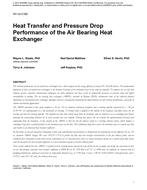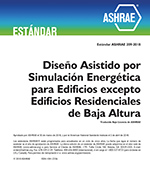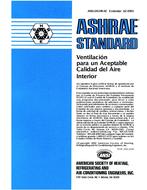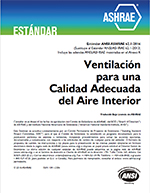Description
The thermal performance of air-cooled heat exchangers has a direct impact on the energy efficiency of many HVAC&R devices. The fundamental
limitation of these air-cooled heat exchangers is the thermal resistance of the boundary layer at the solid-air interface. To improve the air side heat
transfer, passive convective enhancement techniques are often employed, but these result in undesirable increases in pressure drop and higher
susceptibility to fouling. The air bearing heat exchanger (ABHE), invented by Koplow (2010), circumvents some of the inherent physical
limitations of conventional heat exchanger topologies and has subsequently demonstrated unprecedented air-side thermal performance, especially in
volume-constrained applications.
The ABHE described in this study comprises a 10 cm [3.9 in] diameter stationary baseplate and a rotating impeller separated by a c.10 μm
[0.39·10-3 in] hydrodynamic (i.e. self-sustained) air bearing. A thermal load is applied to the bottom of the baseplate and flows across the air
bearing and into the rotating impeller. The impeller has fins that extend away from the baseplate and are shaped to act as centrifugal fan blades,
inducing the surrounding ambient air to enter axially and exit radially. During this process the air absorbs the aforementioned thermal load
originating from the baseplate. A key concept of the ABHE is that the hot fin surfaces reside in a rotating reference frame, which imposes a
centrifugal body force on fluid particles in the boundary layer on the fins. This additional body force causes the boundary layer to remain very thin
and results in an enhanced heat transfer coefficient.
In this work, we present numerical simulation results and experimental measurements to demonstrate the performance of two different 10 cm [3.9
in] diameter ABHE designs. We used ANSYS CFX to predict the flow and heat transfer characteristics at the free delivery point, and we
validated these simulation results with several experiments: we (1) measured fan curves at several rotational speeds on a custom-made flow bench,
and (2) measured the heat transfer coefficient at several rotational speeds at the free delivery point.
These results confirm that the ABHE is capable of levels of performance beyond the state-of-the-art; for example, one design was measured to have
an air side primary convective heat transfer coefficient of 2000 W/m2·K [350 Btu/h·ft2·°F] at 4500 rpm. In addition, we observed that its
pumping performance surpassed axial fans of comparable diameter (e.g. at 3750 rpm, it had a 150 Pa [0.60 inH2O] shut-off pressure and a
2370 L/min [83.7 ft3/min] free delivery flow rate).
Citation: ASHRAE Papers CD: 2014 ASHRAE Winter Conference, New York, NY
Product Details
- Published:
- 2014
- Number of Pages:
- 8
- File Size:
- 1 file , 3.3 MB
- Product Code(s):
- D-NY-14-C082




